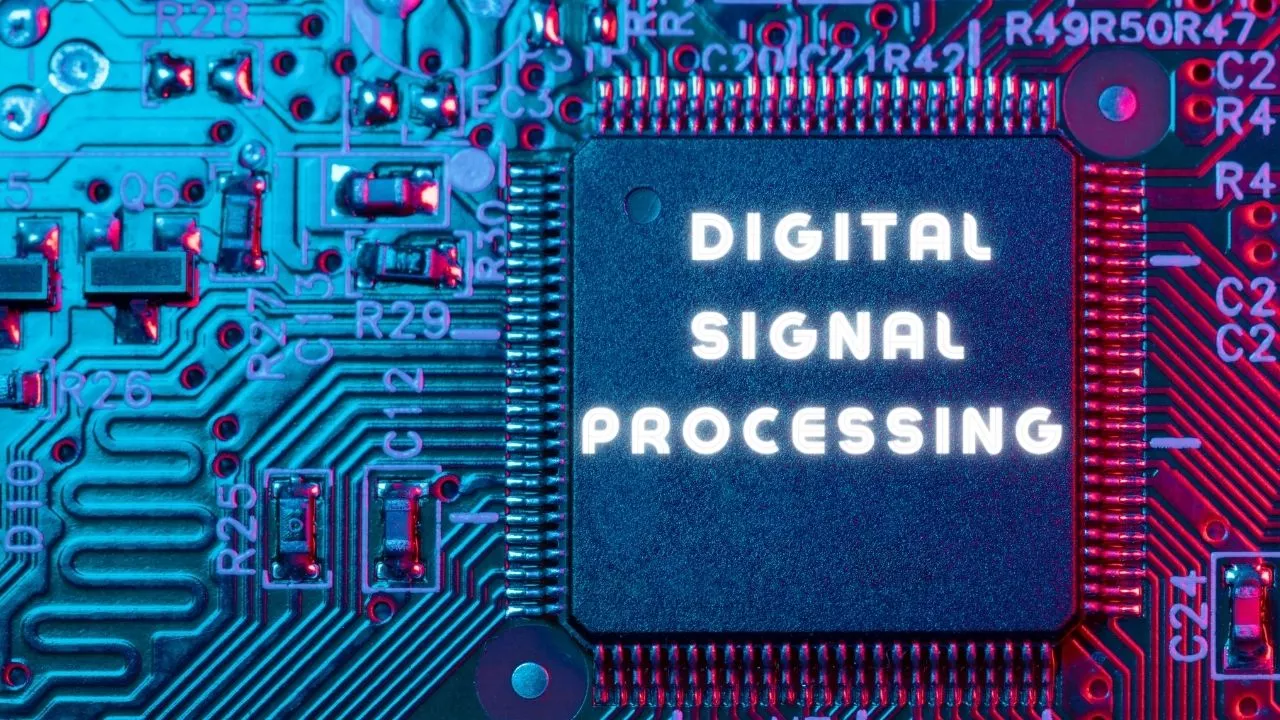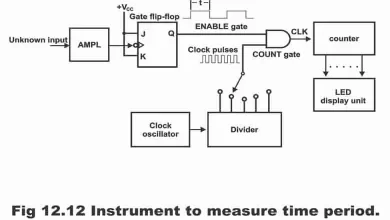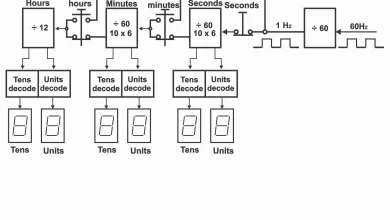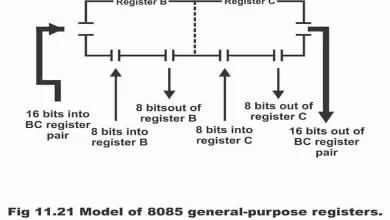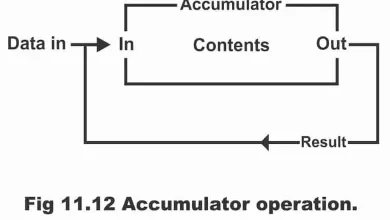Digital Signal Processing (DSP): DSP Basics
Table of Contents
Introduction:
In today’s technology-driven world, digital signal processing (DSP) has become an integral part of numerous applications, from telecommunications to audio processing and beyond. This article aims to provide a comprehensive understanding of digital signal processing, its components, applications, and a comparison with related technologies.
Understanding Digital Signal Processing
Digital Signal Processing (DSP) is the art and science of modifying, analyzing, and manipulating digital signals to extract meaningful information or improve their quality. These signals, which can represent a wide range of data types like audio, images, or sensor measurements, are transformed through mathematical algorithms.
At the core of Digital Signal Processing (DSP) lies the concept of discretization, where continuous analog signals are converted into a sequence of discrete values. This conversion is accomplished by sampling the original signal at regular intervals, resulting in a digital representation that can be easily stored and processed by computers.
DSP involves key components such as Analog-to-Digital Converters (ADCs) that transform analog signals into digital form, and Digital-to-Analog Converters (DACs) that perform the reverse operation. The heart of DSP is the digital signal processor – a specialized computing unit optimized for rapid execution of mathematical operations on digital signals.
Applications of Digital Signal Processing (DSP) are widespread. In audio, it enables noise reduction, audio compression, and equalization. Telecommunications rely on DSP for efficient data transmission and error correction. Image processing benefits from DSP in tasks like image enhancement, compression, and pattern recognition. Biomedical fields use DSP for tasks like filtering out noise from ECG signals.
Real-time processing is a hallmark of DSP, allowing signals to be analyzed and modified instantaneously. This is vital in applications such as live audio mixing or real-time video conferencing.
DSP Components
Digital Signal Processing (DSP) involves several crucial components that work together to process, manipulate, and analyze digital signals. These components enable the conversion of real-world data into a digital format that can be effectively worked with using algorithms and computing devices.
Analog-to-Digital Converter (ADC): ADC is the gateway to DSP. It converts continuous analog signals, such as audio waves or sensor measurements, into discrete digital values by taking samples of the signal’s amplitude at regular intervals. This process is called sampling.
Digital Signal Processor (DSP Chip): This specialized microprocessor executes mathematical operations and algorithms on digital signals. DSP chips are optimized to perform complex computations efficiently, making them suitable for real-time signal processing tasks.
Memory: Digital signals need a place to be temporarily stored for processing. Memory provides the required space to hold signal samples, intermediate results, and algorithms. It includes both working memory (RAM) and storage memory (ROM).
Algorithms: Digital Signal Processing (DSP) algorithms are sets of mathematical operations that transform and manipulate digital signals. They can include tasks like filtering (removing or enhancing specific frequencies), modulation (changing the characteristics of a signal), and compression (reducing data size while preserving essential information).
Digital-to-Analog Converter (DAC): After processing, the modified digital signal may need to be converted back to analog form for output. A DAC takes digital samples and converts them into continuous analog signals, allowing us to hear or see the processed results.
Clock Generator: Digital signals are synchronized by a clock, ensuring that data is sampled and processed at consistent intervals. A clock generator produces the timing pulses needed for these processes.
Input/Output Interfaces: These interfaces connect external devices to the DSP system. Inputs bring analog signals into the DSP system for processing, while outputs deliver processed signals back to the real world.
Instruction Set: The Digital Signal Processing (DSP) chip’s instruction set consists of a collection of operations and commands that it can execute. This set is tailored for efficient signal processing, often including operations like multiply-accumulate (MAC) that are commonly used in DSP tasks.
Fixed-Point or Floating-Point Unit: DSP chips can be designed with either fixed-point or floating-point arithmetic units. Fixed-point units are more efficient but have limited precision, while floating-point units provide higher precision at the cost of more complex computations.
How Does DSP Work?
Digital Signal Processing (DSP) involves transforming signals into digital form, processing them using algorithms, and converting them back to analog if needed. The process includes four stages:
Acquisition: Analog signals are sampled and converted into digital values using ADC.
Processing: Digital algorithms manipulate the sampled values to achieve desired outcomes.
Analysis/Modification: The processed data is examined or altered based on application requirements.
Reconstruction: If necessary, the modified digital signal is converted back to analog using DAC.
Fixed-Point vs. Floating-Point DSP
Fixed-point and floating-point are two ways to represent numbers in DSP:
Fixed-Point: Numbers are represented with a fixed number of digits before and after the decimal point. It’s efficient for simple operations but can be limited in precision.
Floating-Point: Numbers are represented with a sign, exponent, and mantissa. It offers higher precision but requires more computational resources.
Pros and Cons of DSP
Pros:
Versatility: Digital Signal Processing (DSP) can be applied to various domains.
Real-time Processing: Enables instant analysis and response.
Noise Reduction: Cleans up noisy signals effectively.
Efficiency: Achieves complex tasks with relatively low hardware requirements.
Cons:
Complexity: Implementing advanced Digital Signal Processing (DSP) algorithms requires expertise.
Resource-Intensive: Some DSP algorithms demand significant computational power.
Signal Aliasing: Improper sampling can lead to distorted signals.
Digital Signal Processing (DSP) Applications
DSP finds applications in diverse fields:
- Telecommunications: Modulation, demodulation, error correction.
- Audio Processing: Equalization, noise cancellation, audio compression.
- Image Processing: Image enhancement, compression, pattern recognition.
- Biomedical Signal Processing: ECG analysis, MRI image processing.
- Radar and Sonar Systems: Signal analysis for object detection.
- Control Systems: Feedback control, motor control.
Differences between DSP and FPGA
DSP:
- Focuses on signal processing and algorithm execution.
- General-purpose processors optimized for signal processing tasks.
- Provides flexibility and ease of algorithm modification.
FPGA:
- Configurable hardware components that can be programmed to perform specific tasks.
- Suited for applications requiring parallel processing and hardware-level customization.
- More resource-intensive but offers high performance for specific tasks.
Differences between DSP and MCU
DSP:
- Designed for intensive mathematical operations and signal processing.
- Optimized for numerical computations.
- Typically used in applications like audio processing, telecommunications, and multimedia.
MCU (Microcontroller Unit):
- General-purpose processors with integrated memory, peripherals, and interfaces.
- Used for control-oriented tasks in various applications.
- May lack the specialized hardware for complex signal-processing tasks.
conclusion
In conclusion, digital signal processing has revolutionized the way we analyze and manipulate signals in various domains. Its ability to process, modify, and extract meaningful information from digital signals has paved the way for numerous technological advancements. By understanding its components, applications, and advantages, we can harness the power of DSP to innovate and improve various aspects of our digitally driven world.
